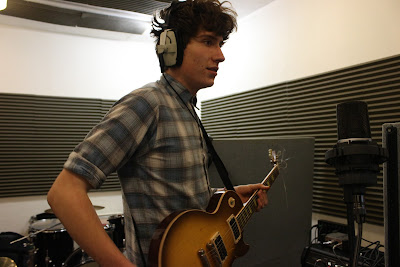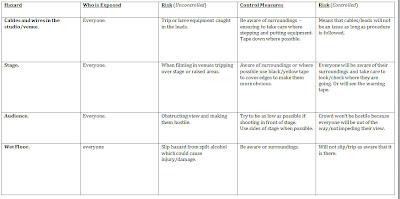At the Warren The Tennents were originally going to only be recording two songs - 'Touch The Sky' and 'I've Been Waiting' but they also recorded this track, 'Hey'. I have decided to use a sample of this video as the first track on the documentary because of the introduction - which is longer and will therefore stretch over the opening titles, instead of having no sound at all. The downfall to using this track however is that I have less even footage - i.e. not all the members of the group share a similar time in the video because of battery running out, or the memory card unable to carry more as I had only planned for two tracks. Over the two days at The Warren I shot around 40GB of footage because I was shooting in full HD (1920 x 1080) because if the quality wasn't good then the documentary would loose a lot of versimilitude It would also mean that the little focusing tweaks through the video would not be noticable due to the quality and I think that these work well - making the shots more interesting whilst also making the subject more intriguing.
I editied the whole piece of footage in Adobe Premiere CS4 after going through the clips in RealPlayer choosing which were usable and which had to be scraped - or at least put in a miscellaneous folder. In Premiere I cut the clips and placed them in the order I wanted them to appear in then put up the brightness and contrast to realistic levels so that the lights look right to our eyes because I think the ISO on the camera was a little sensitive with the aperture. Other than that I didn't add any other effects to make it better quality - I wanted it to be as close to how it was shot as I could possibly; which I think makes the footage more point of view and as if the viewer/audience was actually there.
For the actual documentary, only around 30-40 seconds will be used rather than the whole video - otherwise the documentary would seem very dull and repetitive for every band shown. Instead I want to make sure that every video is just a taster of the band - therefore showcasing the musicians around Hull much better. This means/encourages the audience to listen to and remember the band later because they haven't heard all of the track - therefore meaning that the documentary is doing what it is supposed to; presenting a snapshot of loac bands.








.jpg)
























